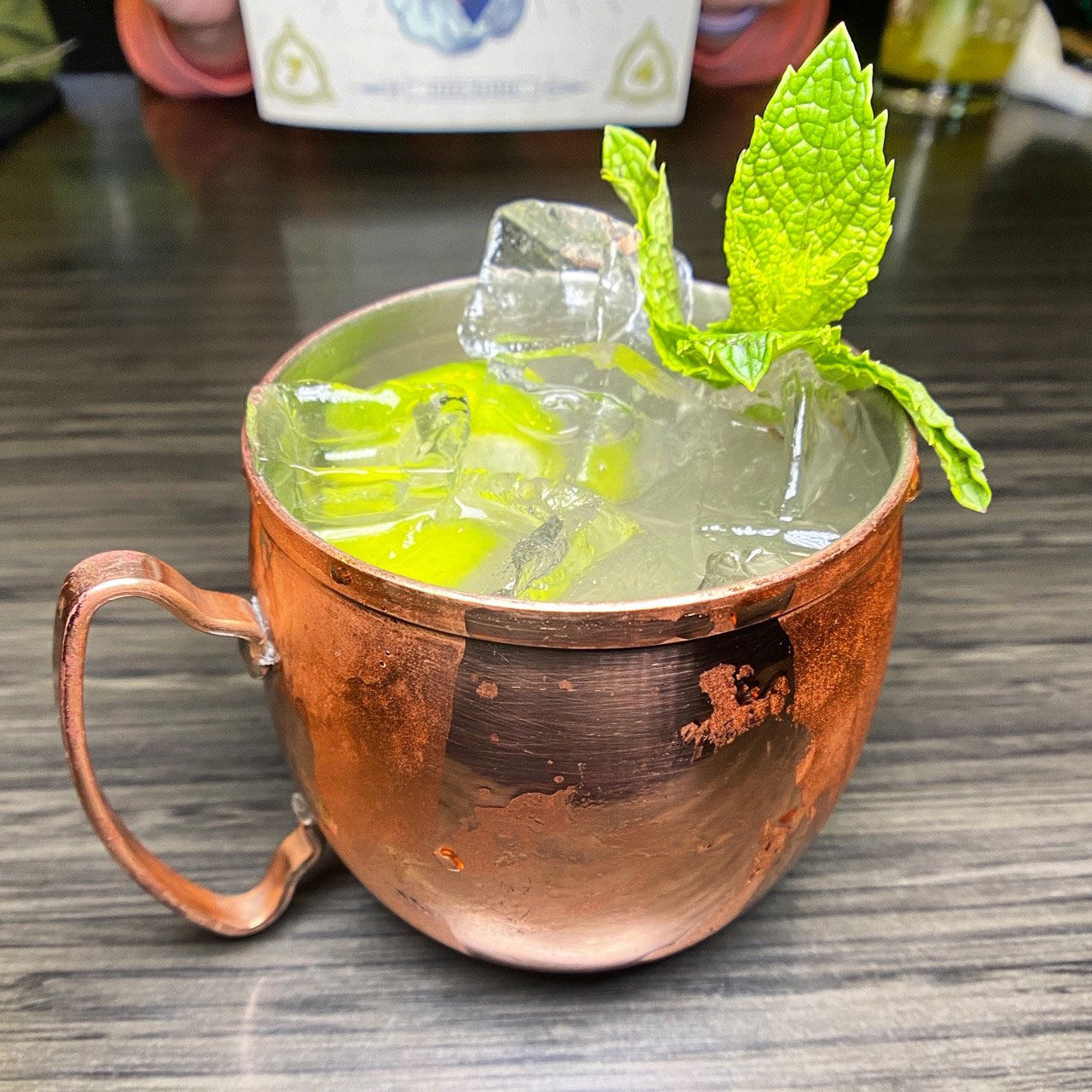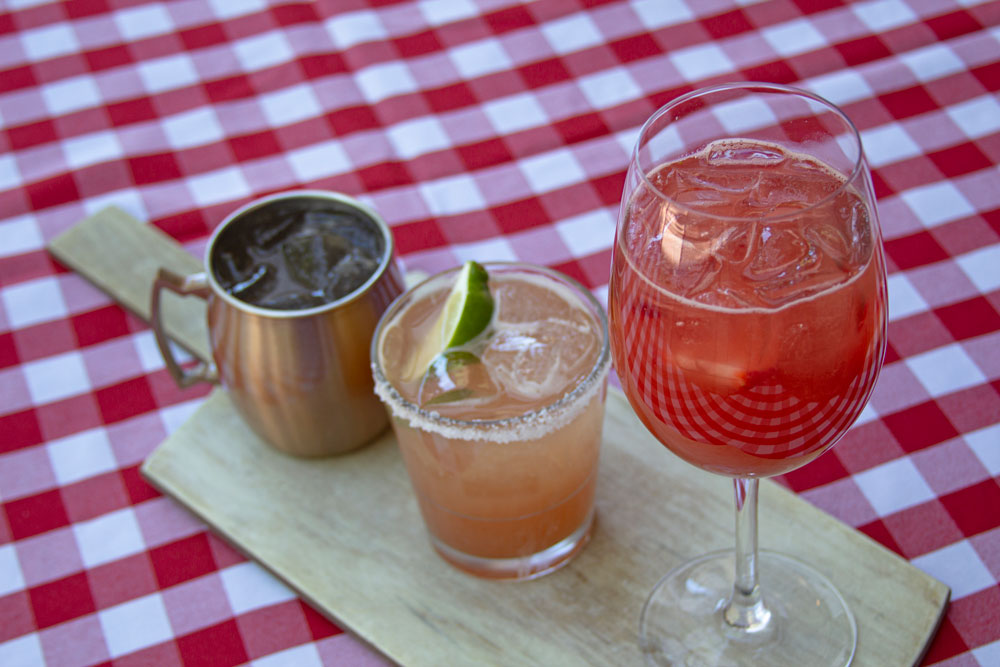- Consumers are more eager than ever to explore different flavors or styles of drinks at their favorite pizza restaurant.
- A signature beverage menu can increase customer satisfaction, grow top-line sales and contribute to profit margins.
Related: 6 ways to create a kid-friendly beverage menu for your pizza restaurant
By Tracy Morin
Just when you thought you couldn’t stomach another pandemic-related aftershock, experts have observed that COVID-era customers expect more from restaurants today—and those expectations carry over to the beverage menu, too. “Customers are looking for an experience now, not just eating out,” asserts Shawn Soole, owner of Soole Hospitality Concepts in Victoria, British Columbia, Canada. “When you develop a creative drinks menu, it helps the guest venture outside of their normal choice—and, in turn, adds 5% to 10% or more in revenue.”
Now more than ever, consumers are in search of unique restaurant experiences they can’t recreate at home—and they’re more eager to explore different flavors or styles of drinks, says Kelly Hendriksen, director of beverage marketing for Atlanta-based Mellow Mushroom. “Americans are craving the innovative beverages they couldn’t get last year—uniquely crafted specialty drinks, both alcoholic and nonalcoholic, that are high-quality and reflect trend-forward ingredients,” she says. “Having a creative selection of beverages that continually introduces new items is essential to driving both guest trial and guest frequency. A signature beverage menu increases customer satisfaction (which enhances loyalty), grows top-line sales, and contributes significantly to profit margins.”

“Focus your happy hour on drinks that build [guest] confidence. People are attracted to things they have heard of before, and having them on special makes the guest eager to try something that may be a house creation outside of happy hour.”
— Shawn Soole, Soole Hospitality Concepts
Starting From Scratch
Soole emphasizes that the key to a great beverage menu is the why—the story behind how the drinks fit in with your concept. “We spend hours creating the ‘why’ behind the restaurant concept, but very rarely do drinks get the same love,” he says. “Start with what you’re trying to achieve with the beverage menu.”
Hence, Soole’s top three pointers for a winning beverage program: Determine what you want from the program; ensure it’s easy to achieve during busy service times; and train the bar and floor staff to understand that every upsell equals a bigger tip. “Once you have the why, lay out the overall theme,” Soole suggests. “How many nonalcoholic drinks or mocktails do you want, how many cocktails, highballs, etc.? Create a program that represents your venue but also the systems and setup you have.” In other words, don’t create a complicated cocktail program unless you have the skilled bartenders and bar design to pull it off on a busy night.
Related: Alternative “hard” beverages can draw younger customers to your pizzeria
Also make sure you understand your market. If you’re just beginning, Soole recommends first focusing on classics—building guests’ confidence before creating a high-concept menu. “Focus your happy hour on drinks that build this confidence,” he suggests. “People are attracted to things they have heard of before, and having them on special makes the guest eager to try something that may be a house creation outside of happy hour.”
“Having a creative selection of beverages that continually introduces new items is essential to driving both guest trial and guest frequency.”
— Kelly Hendriksen, Mellow Mushroom
Hendriksen agrees that guests are looking for variety—but only after you earn their trust. “The key for guest trust (and ultimately loyalty) is ensuring that your core signature beverages are balanced and well-executed,” she says. “From there, knowing your consumer is crucial—their flavor preferences, whether they’re looking for a trusted brand or profile, where they are willing to explore and when they want to be in their comfort zone.”
Therefore, Hendriksen believes that every good cocktail program needs a healthy core of permanent menu items—guest favorites that are profitable, can be executed consistently, fit the brand, and feature ingredients that are appealing to the target audience. “From there, introducing variety through ongoing innovation keeps the menu fresh and exciting, and can generate new guests and drive guest frequency,” Hendriksen says.
Mellow Mushroom continues a “robust pipeline of innovation and testing” to help ensure that items are ready to roll out when customers are craving new flavors. “When we switch up our offerings is truly dependent on our guests,” Hendriksen says. “Limited-time features can earn their way onto the core menu if they generate a strong enough following.”

Grimaldi’s Pizzeria partnered with an Italian winery to create custom bottlings that can’t be found elsewhere.
Matching the Menu
Whether you serve up nonalcoholic beverages only, offer wine and beer, or have a full-bar liquor license, a standout drinks menu should match the brand’s food menu. “Before creating a beverage menu, we do extensive market research to learn what is trending,” says Hector Godinez, culinary manager for Grimaldi’s Pizzeria, based in Scottsdale, Arizona. “We then consider what Grimaldi’s can bring to the table to get ahead of the identified trends. The menu is carefully crafted to complement our coal brick-oven pizza and calzones, as well as salads and desserts.”
For example, Grimaldi’s partnered with the Italian winery Mille Gradi to produce custom bottlings of Sangiovese and Pinot Grigio that are exclusive to the restaurant, providing a unique and authentic wine pairing for its cuisine. “Since our pizza is made using 100-year-old pizza making techniques, we also offer classic cocktails, such as an old-fashioned, martini, mule, and margarita, which pair well with our menu’s flavor profiles,” Godinez adds.
At V&M Italian-American Bistro in Wilmington, Delaware, co-owner Margherita Carrieri-Russo kicked off her strong cocktail menu with the Limoncello Ice Martini, which echoes the restaurant’s homemade-Italian focus with ingredients like in-house limoncello and lemon ice. And, as on the food menu, offering something for everyone was also important. “It was our goal to create a variety of drinks, with a variety of alcohols and local ingredients,” Carrieri-Russo explains. “We include vodka, tequila, gin, bourbon, whiskey, and something bubbly, like prosecco.”

The Limoncello Ice Martini is a star performer on the cocktail menu at V&M Italian Bistro.
Adding Excitement
To craft a beverage menu that stands out from competitors, Soole recommends exploring market trends in your region and understanding where you stand in that market. “Hard seltzers are extremely popular right now, but they’re just canned highballs, so create your own in-house versions,” Soole suggests. “Gin or vodka with housemade syrups and topped with club soda or flavored soda will give people an elevated experience, compared to a White Claw. Change your menu seasonally or every six months to leverage people’s changing tastes and the local selection of produce.”
Indeed, the Grimaldi’s beverage team thinks seasonally and/or regionally to offer memorable flavors and tastes. “To create excitement and put our own Grimaldi’s signature on the menu, we put a twist on classic cocktails by adding Italian flavors like limoncello to our margarita and martini,” Godinez explains. “We add seasonal flavors, like watermelon, to our margarita during the summer, and Granny Smith apple and peach to our mule and sangria during the fall to take advantage of the freshness and quality of these seasonal ingredients.”
Carrieri-Russo agrees that working seasonally and locally allows mixologists to create authentic, one-of-a-kind flavors that keep customers coming back. “For holidays, we get eggnog from a local dairy farm—it’s fresh and out of this world,” she says. “We grow our own basil, which we can use in our peach-basil sangria, topped with prosecco. You get great quality when you stay close to home.”
Related: Beer nuggets: Little balls of profit
At Mellow Mushroom, where the signature margarita has long been a guest favorite, staff members use this cocktail as a jumping-off point to create an entire menu category devoted to it. “We bring in different expressions of tequila to create varying flavor profiles that allow the guest to explore and find their favorite—whether Blanco, with its clean, fresh salinity; Reposado, with notes of caramel and vanilla; or Anejo, which is smooth and mellow,” Hendriksen says. “We’ve also brought a seasonal margarita into the mix as a limited-time offer this past summer, betting on trending flavors like smoky mezcal, sweet peach and spicy jalapeño. Different margaritas not only ensure that there’s something for a variety of palates, but also gives guests a reason to come back for that second (or third) cocktail.”

Grimaldi’s 2021 summer cocktails
Pairing Notes
You can also entice guests through smart pairing choices—which you may choose to call out on the menu or promote through server suggestion. Sgt. Pepperoni’s Pizza Store, with three locations in Orange County, California, features 16 taps in-house, including two wines, one hard seltzer and one nitro ale. “The beer lineup is IPA-forward, but with a well-balanced offering of lagers, pilsners and red ales—range is essential for pairing with pizza,” explains Shoe Schoemann, store manager at Sgt. Pepperoni’s Pizza Store. “In general, lighter beers pair with lighter pizzas. Ambers pair well with our Meatball Ricotta pizza. The nitro ale is ideal for a spicy pie like the Buffalo Chicken Pie, and we recommend Chardonnay on tap with the Margherita pizza.”
Moreover, Schoemann pays attention to detail and presentation. “Wherever it makes sense, we pair drinks with a garnish,” he says. “We serve Truly hard seltzer in a pint glass with a Tajin rim and lime wedge. And, because pizza brings people together—it’s a meal meant to be shared with friends and family—we offer pitchers of beer to extend the sharing culture of the pizza experience.”
“We add seasonal flavors, like watermelon, to our margarita during the summer, and Granny Smith apple and peach to our mule and sangria during the fall to take advantage of the freshness and quality of these seasonal ingredients.”
— Hector Godinez, Grimaldi’s Pizzeria
V&M Bistro’s wine menu was also created to pair well with key flavors and categories across the menu, like tomato sauce, pizza, pastas and salads. “Our Pecorino salad with pear goes well with Sauvignon Blanc,” Carrieri-Russo says. “Chianti always goes well with Italian dishes, and a Pinot Noir or Argentinian Malbec pairs well with our chicken Parm.”
Finally, V&M has made the necessary adjustments to serve cocktails-to-go in the pandemic by pairing drinks with the right prep and packaging. First, Carrieri-Russo made sure that any to-go cocktails could travel well—for example, chilling the spirits themselves instead of adding ice—and created a menu of Boozy Ice Cream pints for to-go orders. “Just like with food, you have to know your drinks’ ingredients,” Carrieri-Russo concludes. “Then, really, it’s just a matter of having fun—there are no right or wrong answers.”
Tracy Morin is PMQ’s senior copy editor and the editor of PizzaVegan.com.















